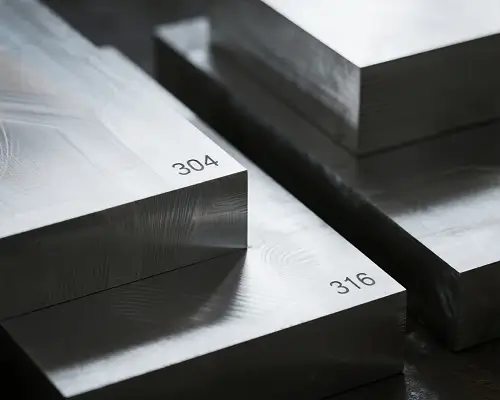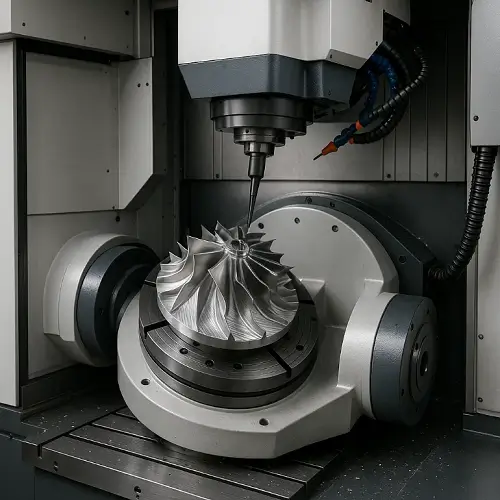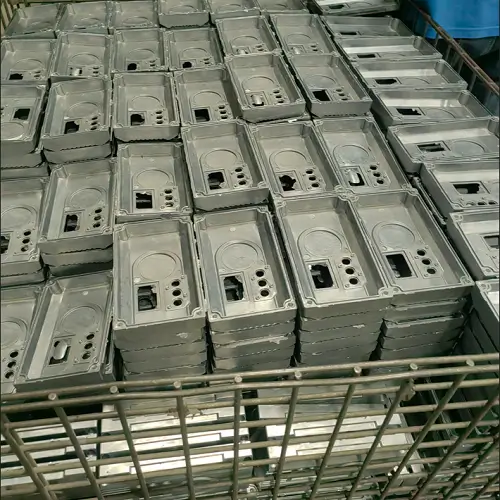304 and 316 stainless steel often appear interchangeable during design review—similar strength, similar structure, and similar appearance. Once the parts enter machining, the differences become obvious. Tool load, chip flow, heat generation, and finishing effort diverge sharply. At JeekRapid, both grades are common in electronics housings, medical components, outdoor equipment, and food-processing parts. Choosing between them is an engineering decision involving machining efficiency, corrosion reliability, and long-term exposure conditions.

Material Composition and Functional Impact
The main chemical difference is the molybdenum in 316. That single addition changes chloride performance, pitting resistance, and machining behavior.
-
304 contains chromium and nickel without molybdenum.
-
316 includes 2–3% molybdenum, improving corrosion resistance but increasing cutting force and heat.
Both grades share similar tensile strength, yield strength, and elongation. Their difference is not structural strength—it is environmental reliability and machinability.
Machining Behavior Differences
304 Machines Faster and Runs Cooler
304 cuts with a more forgiving feel. The work hardening exists, but it is predictable. Feed stability keeps the edge sharp longer, and the surface finish is usually uniform even on large housings or cosmetic covers. On multi-part production runs, 304 reduces tool changes and shortens cycle time.
In JeekRapid’s projects, 304 consistently finishes cleaner on brushed, milled, or polished surfaces. Long toolpaths on thin-wall sections behave predictably with fewer heat marks.
316 Generates More Heat and Higher Cutting Pressure
The molybdenum addition stiffens the cutting zone. Tool load rises quickly and heat accumulates deep in the cavity. When pocketing 316, temperature rises fast enough that tool wear accelerates even under heavy coolant.
Feed and speed must be lowered, and the machining window becomes narrower. Identical geometries commonly take 20–40% longer to machine in 316 compared to 304. On parts with deep pockets or long axial toolpaths, the difference is even larger.
JeekRapid often switches to stronger end mills or different tool coatings when machining 316 to counter edge rounding and drag marks.
Surface Appearance and Finishing Quality
304 usually produces smoother, more uniform surfaces. A light finishing pass often achieves cosmetic quality.
316 tends to show thermal discoloration, drag lines, or light smearing if cooling is not ideal. For Class-A cosmetic surfaces, additional finishing passes or slower feeds are often required. For decorative components, 304 is the practical choice unless corrosion risk requires 316.
Corrosion Resistance Differences
Chloride Exposure
Chlorides attack 304 quickly, especially in warm or stagnant environments. Pitting begins quietly and spreads beneath the passive layer.
316 maintains its passive layer under chloride attack and resists deep pitting far more effectively.
Any part exposed to food salts, seawater, disinfectants, or cleaning agents should default to 316.
Coastal Air and High Humidity
Outdoor 304 parts near coastlines often show surface rust within months.
316 remains stable for years because the passive layer withstands salt-laden moisture.
Medical Sterilization Conditions
Repeated steam cycles, disinfectants, and oxidizing agents degrade 304.
316 handles these cycles without losing surface integrity, which is why medical and laboratory equipment often specify 316 by default.
Chemical Processing or Industrial Fluids
304 resists mild acids but deteriorates quickly if chlorides or aggressive chemicals are present.
316 resists chemical attack more effectively across long-term exposure.
Frequent Washing or Liquid Cycling
Food equipment, beverage machinery, and sanitary hardware often perform better with 316 because washing cycles weaken 304 over time.
Manufacturing Cost Comparison
Cycle Time
Machining 316 requires slower cutting speeds and leaner feed rates. Over hundreds of parts, cycle time differences become significant.
Tool Wear
Tools that remain sharp through many parts in 304 may lose their cutting edge early in 316. Consumable cost rises quickly in large production batches.
Thermal Control and Fixturing
316 pushes more heat into the tool and fixture. Coolant flow must be stronger, and clamping must resist higher cutting pressure. Thin walls flex more easily when machining 316, increasing the chance of dimensional drift.
Surface Quality Adjustments
316’s thermal behavior increases rework when cosmetic marks appear.
304 typically requires fewer corrections.
How to Choose Between 304 and 316
When 304 Is the Right Choice
304 suits parts where machining efficiency, cosmetic quality, and cost predictability matter most. For indoor environments without chemical or chloride exposure, 304 offers stable long-term durability. Electronics housings, fixtures, brackets, and cosmetic covers often fall into this category.
In JeekRapid’s machining programs, 304 consistently finishes cleaner and runs faster on high-volume components.
When 316 Becomes Essential
316 is required when the part faces chlorides, disinfectants, marine air, food-processing liquids, chemical fluids, or repeated sterilization. Its machining cost is higher, but the corrosion performance outweighs the added expense in harsh environments.
Marine components, medical instruments, outdoor hardware, and chemical-handling parts should default to 316.
If strength and corrosion resistance must be combined, a precipitation-hardening grade like 17-4 PH may be a better fit.
FAQs About 304 and 316 Stainless Steel
Is 316 always better?
No。316 is better only when corrosion risk is real. If the part stays in clean indoor environments, 304 remains the more efficient choice.
Do 304 and 316 machine the same way?
Both are machinable, but 316 generates more heat and dulls tools faster.
Are 304 and 316 magnetic?
Both are non-magnetic in annealed condition but may become slightly magnetic after cold working.
Can 304 be used outdoors?
Yes, but coastal or humid environments accelerate corrosion. Coastal hardware should use 316.
What if corrosion resistance and strength are both required?
17-4 PH stainless steel is often the better material.(此处放 17-4 PH 链接)
Conclusion
The choice between 304 and 316 stainless steel ultimately comes down to machining efficiency, thermal behavior, tool life, environmental exposure, and the cost of corrosion failure. 304 is the practical option for parts focused on throughput, appearance consistency, and controlled budgets. 316 becomes essential once chlorides, cleaning agents, steam, food liquids, or outdoor conditions enter the picture.
JeekRapid works with both grades on complex housings, thin-wall structures, tight-tolerance components, and cosmetic surfaces. If you’re deciding whether your part should be machined from 304 or 316, our engineering team can review the geometry, environment, and machining requirements and provide side-by-side quotes for both materials so you can compare the actual manufacturing cost with confidence.
Click to request a quote — we’ll respond within 24 hours!


